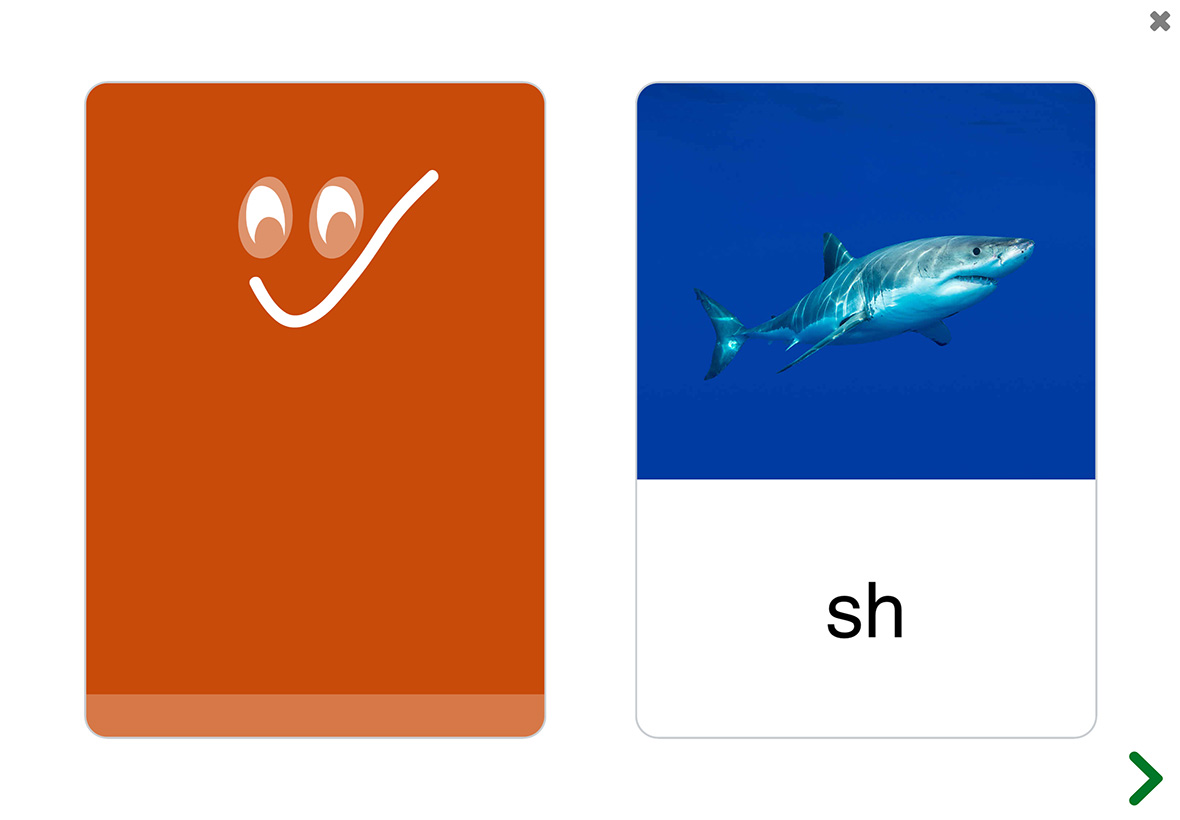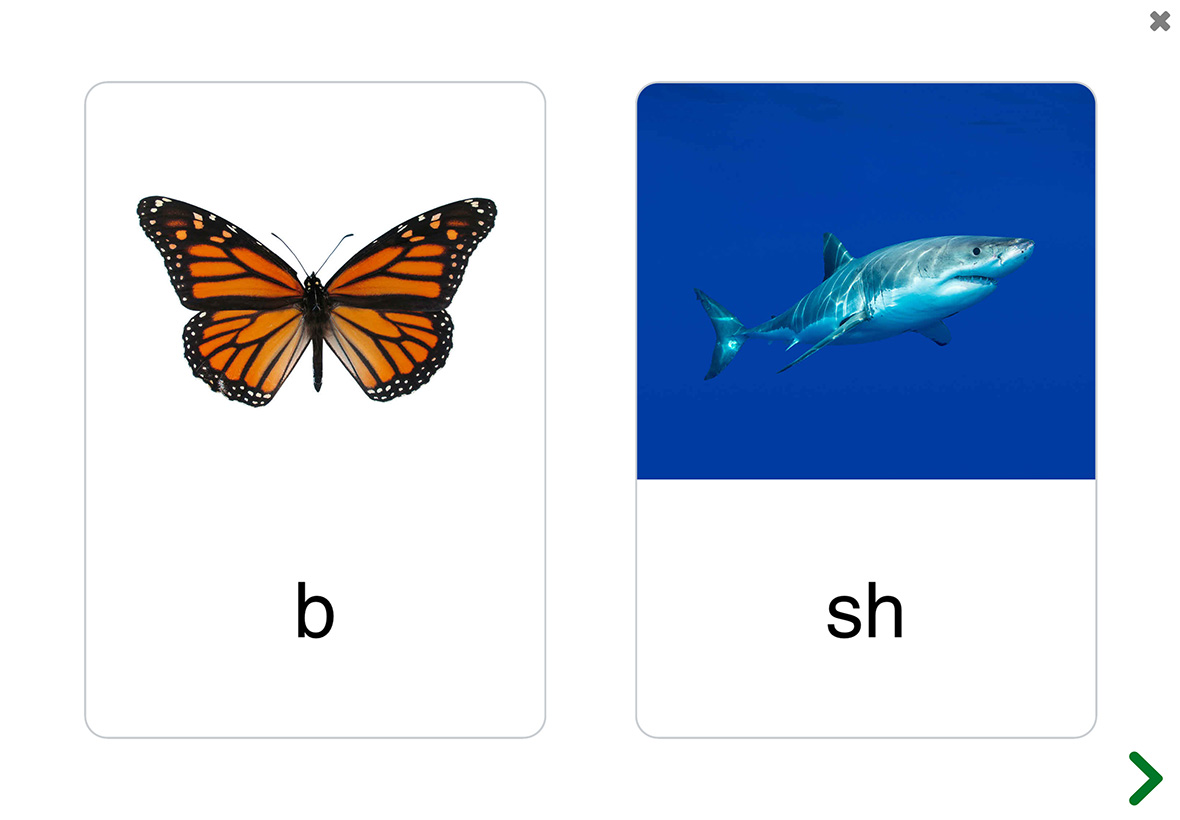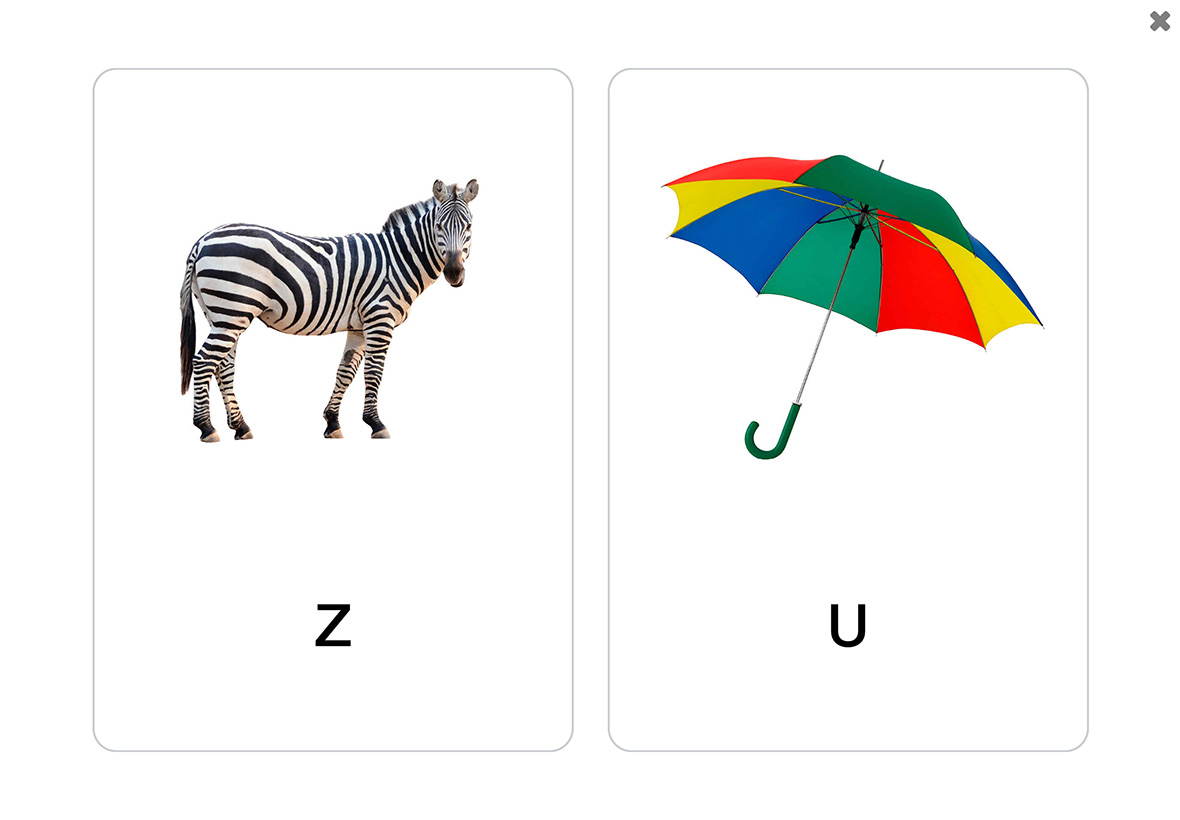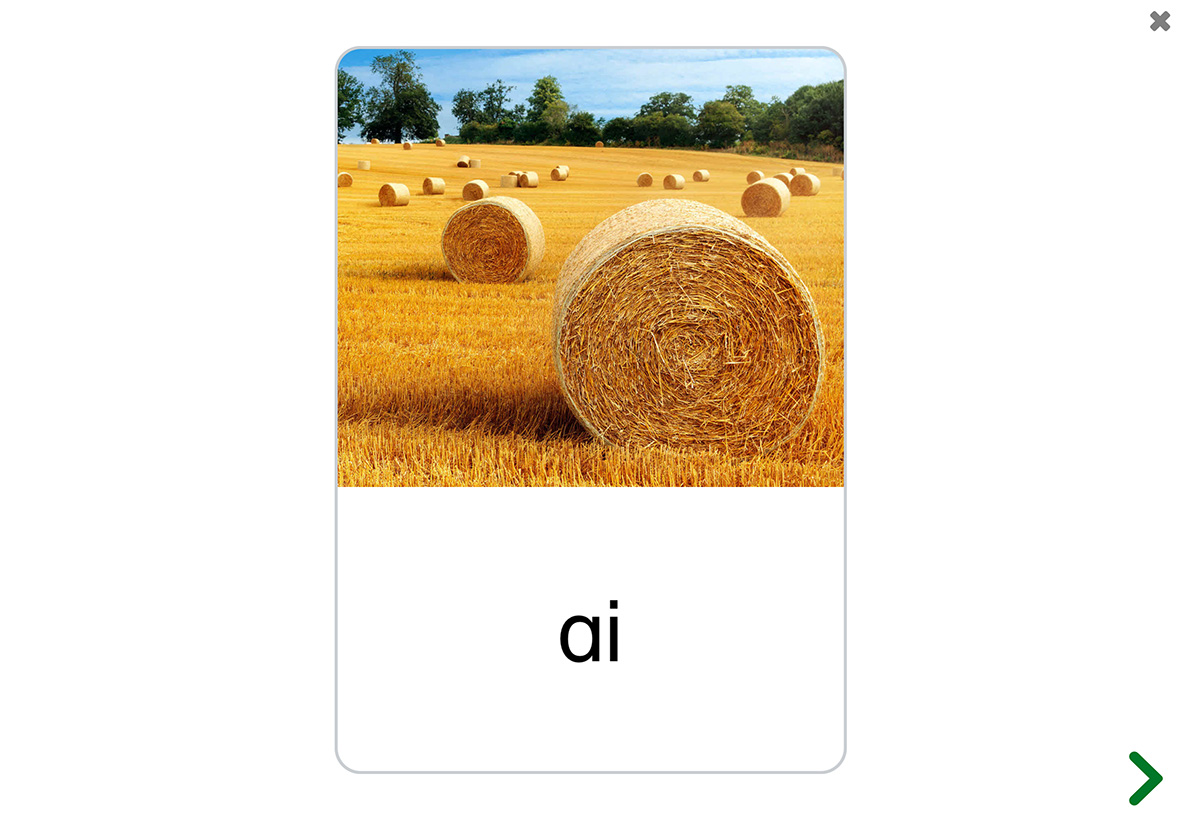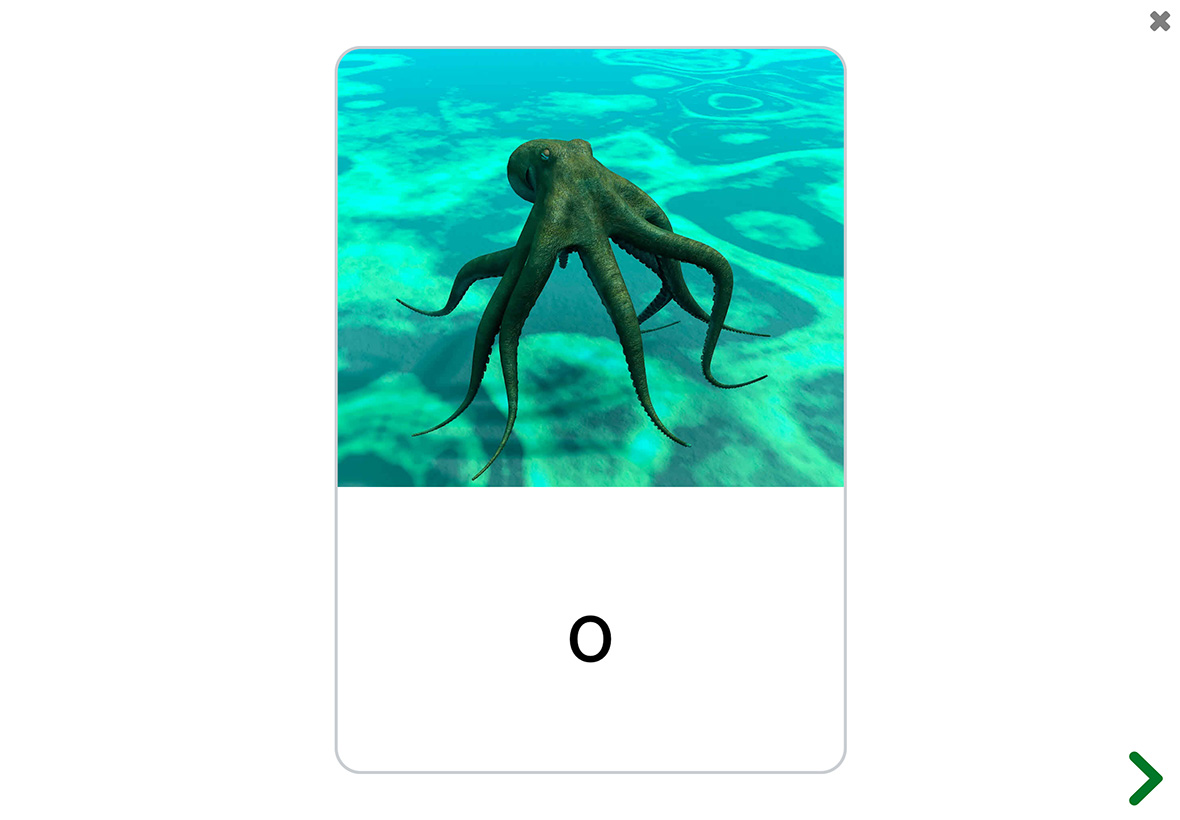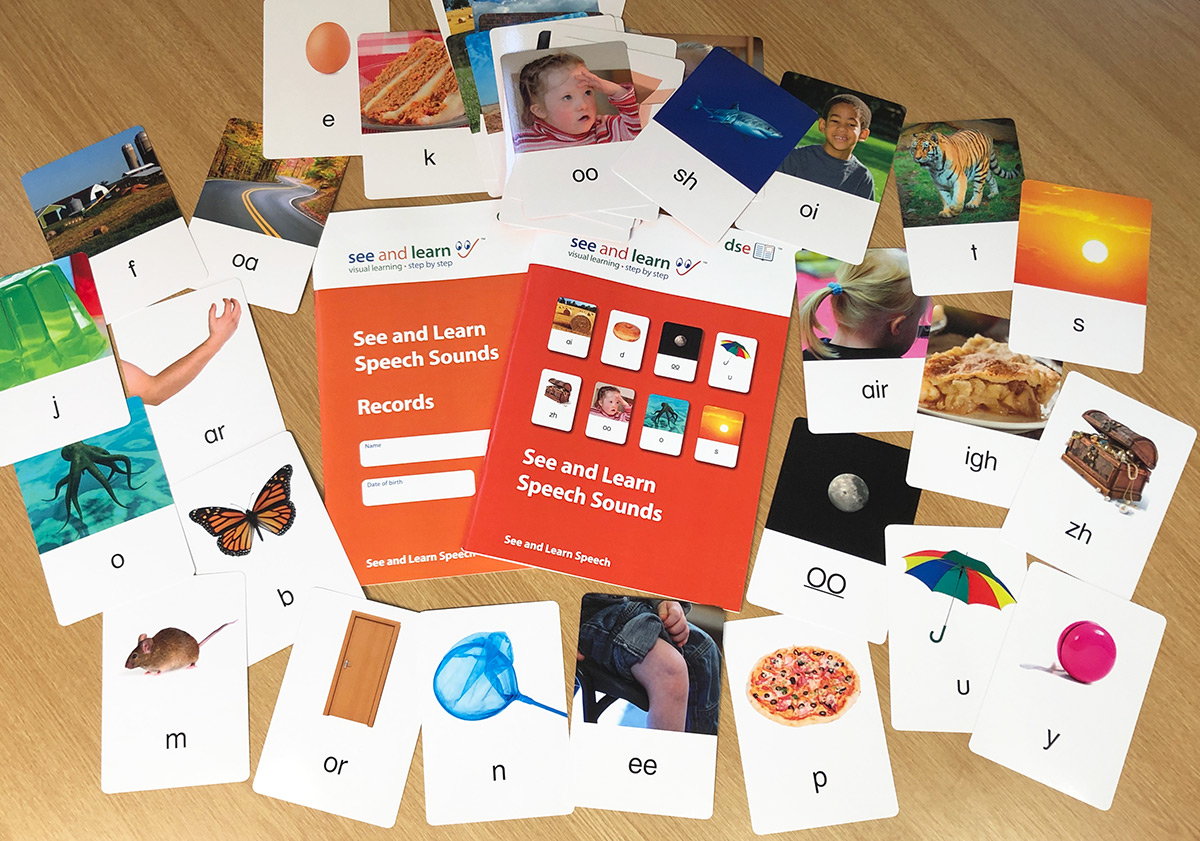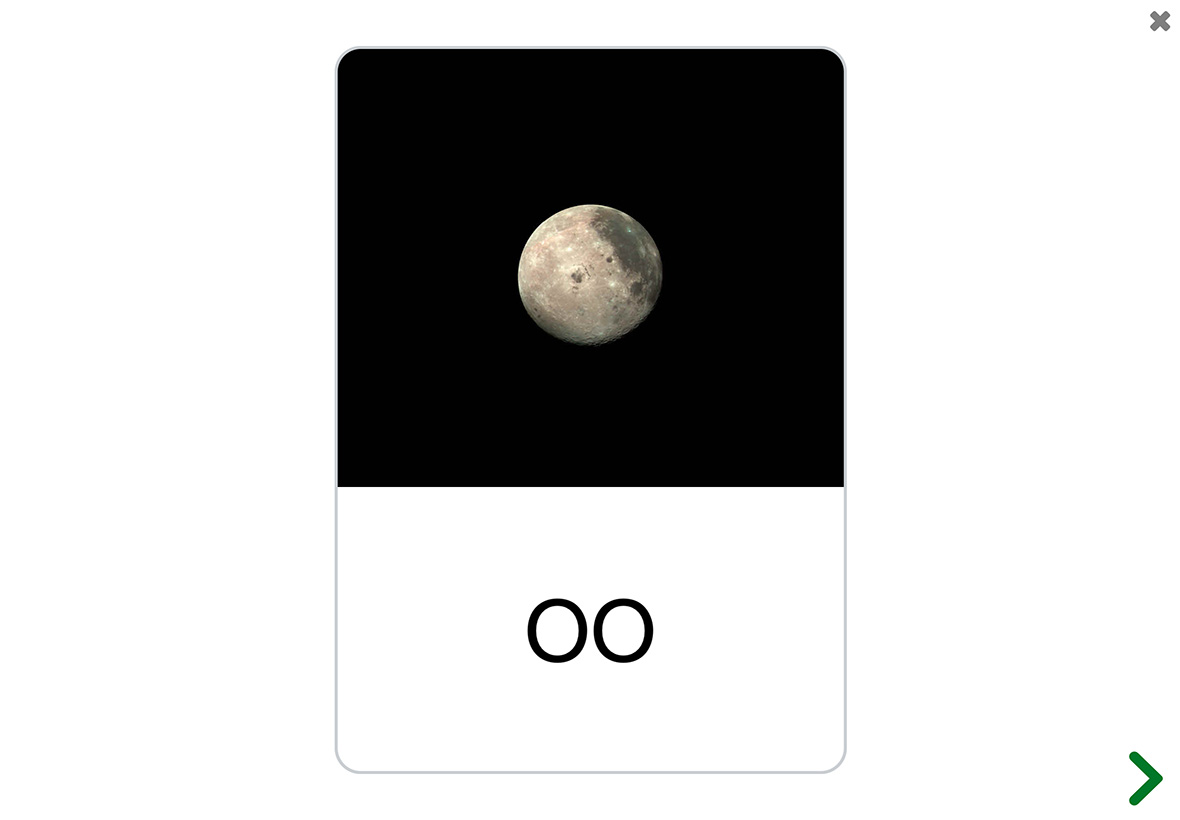Speech Sounds
See and Learn Speech Sounds is the first step in See and Learn Speech. It is designed to help young children with Down syndrome listen to and learn speech sounds, identify the differences between sounds and to produce individual speech sounds.
The activities are intended to supplement everyday opportunities to learn speech with the additional support that most children with Down syndrome, and children with similar additional learning difficulties, need to learn to speak clearly.
See and Learn Speech Sounds supports activities that encourage attention, listening, discrimination and production of the sounds that make up speech. See and Learn Speech Sounds introduces 41 speech sounds (phonemes) in the English language with clear picture card prompts.
Learning goals
- Teach the sounds in speech (phonemes), encouraging your child to listen, imitate and to store representations of the sounds in memory
- Teach your child to associate picture prompts with speech sounds (to be used in teaching activities)
- Teach your child to notice differences between sounds (discrimination)
- Test your child's ability to distinguish between speech sounds
- Practise producing isolated speech sounds
- Encourage your child to pay attention and engage in teaching activities for short periods of time

Features
- Designed to build on the children's relative strengths in visual processing and to minimise working memory demands
- Designed to advance in small steps and offer lots of opportunities for practice and consolidation
- 4 teaching activities: Listening to Single Sounds, Listening to Different Sounds, Selecting Different Sounds and Saying Sounds
- Simple design to avoid distraction and focus attention on the learning tasks
- A detailed guide with step-by-step instructions
- Record forms to track your child's progress and plan the teaching activities
- Resources for teaching in any English dialect (optional spoken prompts are included in the app editions with UK and US accents)

When to start
See and Learn Speech Sounds is designed for use with babies from around six months of age and preschool children. You can use the sound cards with children of any age above six months to practice listening, discrimination and the production of sounds.
Some older children will be listening to, discriminating and producing many sounds spontaneously, but may still be unable to produce some individual speech sounds. You can use the See and Learn Speech Sounds cards to help these children learn to say these specific sounds.
Progress Tracking Apps
New progress-tracking apps are coming soon.
Record and monitor your child's progress, get personalized advice and guidance, and support scientific research.
Next steps
Children who have learned at least some of the consonants b, m, p, h, k, l, r, sh, t, w, or z and can say the vowels ar as in arm, ee as in knee, and oo as in moon are ready to start See and Learn Combining Sounds.
See and Learn Speech is designed to encourage clearer speech production. Children should be learning the meanings of words and how to use words to communicate. See and Learn Language and Reading teaches the meaning of spoken words and encourages children to practice saying new words, and is designed to be used alongside See and Learn Speech.
Many children with Down syndrome will progress more slowly with speech production than word learning. Slower progress with speech development is not a barrier to learning new words and phrases. Children can communicate their understanding or words via sign or gestures (for example, pointing a pictures or written words) even if they are still learning to say the words clearly.

How to buy
See and Learn Speech Sounds is available as a printed kit or as an app for Apple iPads.

